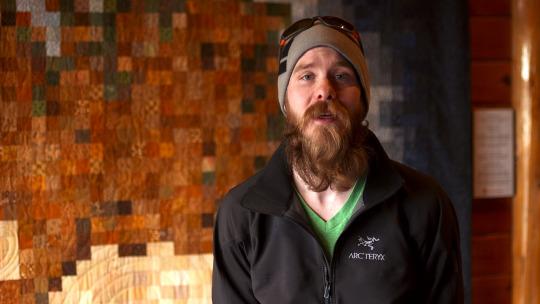Most people don’t associate the Arctic with couture… and many people would cringe if told a jacket was made from polar bear (a threatened species), seal, or arctic fox. But then again, most people don’t live in Greenland — population: 50,000 — where clothing needs to be functional and warm. Very warm.
In Greenland, the majority of the populace are either full or partially Inuit, a people who have lived self-sufficiently on the island for tens of thousands of years — it’s only relatively recently that they have incorporated outside trade into the culture. So they hunt and eat and wear what they kill. The clothing they made hundreds of years ago is still being made today — in the same way.
Yes, that means they wear things like polar bear fur and skin (which is banned in most countries) and Greenlandic sealskin (which is exempt from the EU ban because it is considered ethically correct — the animals live in freedom until the day they are shot). Plus, the animals are shot for meat, with the skin being secondary. (They do eat polar bear in Greenland. Not a lot of it, but they do. It is supposed to be very fishy.)

Hansen in her national costume that has fit her since she was 13. We are jealous.
“We use every part of every animal we kill,” Louise Lynge Hansen, owner of Nuuk Couture, said, noting the meat is eaten, the skin is worn, and even the bones, claws, and teeth of an animal are used for adornment.
Each community has it’s own take on the traditional costume: in the far north, it is basically a huge polar bear coat and seal leggings, but the further south you go, the more colorful and intricate the costumes become.

Details of Louise’s national costume.
But Greenland isn’t just about old school Inuit costumes — thanks to a new wave of designers, it is now trying to establish itself as a fashion hub. Hansen and a few other local designers are starting to combine function with style, using traditional materials like wool, silk, and seal skin to create unique, new looks.
Hansen, from a Western tribe in the South, still wears the national costume her grandmother sewed for her when she was 13. She keeps it wrapped and stored carefully in a suitcase, only taking it out for special occasions. The outfit is comprised of outer boots with minute pieces of colorfully dyed sealskin hand stitched onto white bleached sealskin, sealskin leggings, fur shorts with more detailing, several inner shirts, an outer coat, and a beaded neckpiece.
























